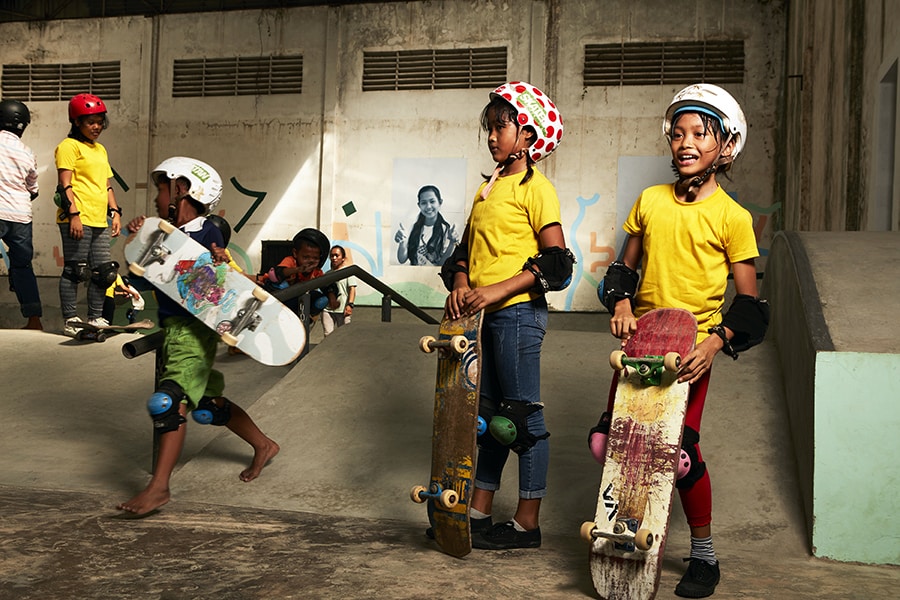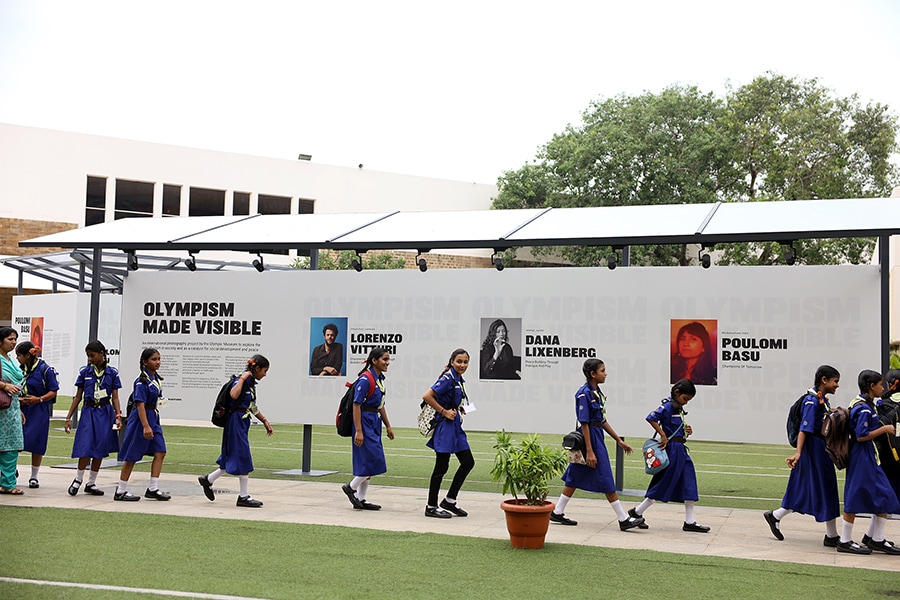
The spirit of Olympics, through art and films
Days before the International Olympic Committee session in Mumbai, the first in 40 years, a first-of-its-kind exhibition retrospective showcases the Olympic movement through films and photographs
 Italian artist Lorenzo Vitturi's photography series on children skateboarding in Cambodia on display at the NCPA, Mumbai
Image: Lorenzo Vitturi
Italian artist Lorenzo Vitturi's photography series on children skateboarding in Cambodia on display at the NCPA, Mumbai
Image: Lorenzo Vitturi
One morning in 2018, Lorenzo Vitturi was waiting at a warehouse in Phnom Penh to shoot a series with Skateistan, a Berlin-headquartered NGO that empowers underprivileged kids through skateboarding and education. The Italian artist-sculptor-photographer was sent to the Cambodian capital by the International Olympic Committee (IOC) for its Olympism Made Visible project, an international fine arts photography initiative led by the Olympic Museum to capture the transformative power of sport beyond the quadrennial Games.
“As I was waiting, my thoughts were broken all of a sudden by the arrival of 50 children running and screaming,” says Vitturi, as he recalls the moment vividly while speaking to Forbes India in Mumbai. “There was an explosion of joy and movement around me—the instructors tried to control them, but it was impossible. They straight got to the boards and started to skate. I am not a sports photographer, but that was the day I really got to know how sports can empower.”
Vitturi’s series, along with that of Dutch photographer Dana Lixenberg, who captured through her lens the integration of Syrian refugees into the Jordanian society through the work done by Amman-based Generations for Peace, is on display at the National Centre for Performing Arts (NCPA) in Mumbai as part of a first-of-its-kind exhibition retrospective in India. Christened ‘Olympics in Reel Life’ and presented by the Film Heritage Foundation in partnership with The Olympic Museum in Lausanne (Switzerland), it will also showcase 33 iconic films and 10 series from the Olympic Channel.
The exhibition premieres the works of Poulomi Basu, the only Indian among the 12 photographers commissioned by the IOC, who explored the influence of sports on children at public schools in Odisha’s Bhubaneswar, enrolled with the Olympic Values Education Programme (OVEP), an international educational initiative designed by the IOC. The OVEP was officially launched in India in 2022 in association with the Abhinav Bindra Foundation, a non-profit launched by Bindra, the Olympic champion shooter.
Also read: Here's the magic bullet a five-time Olympian recommends for success










